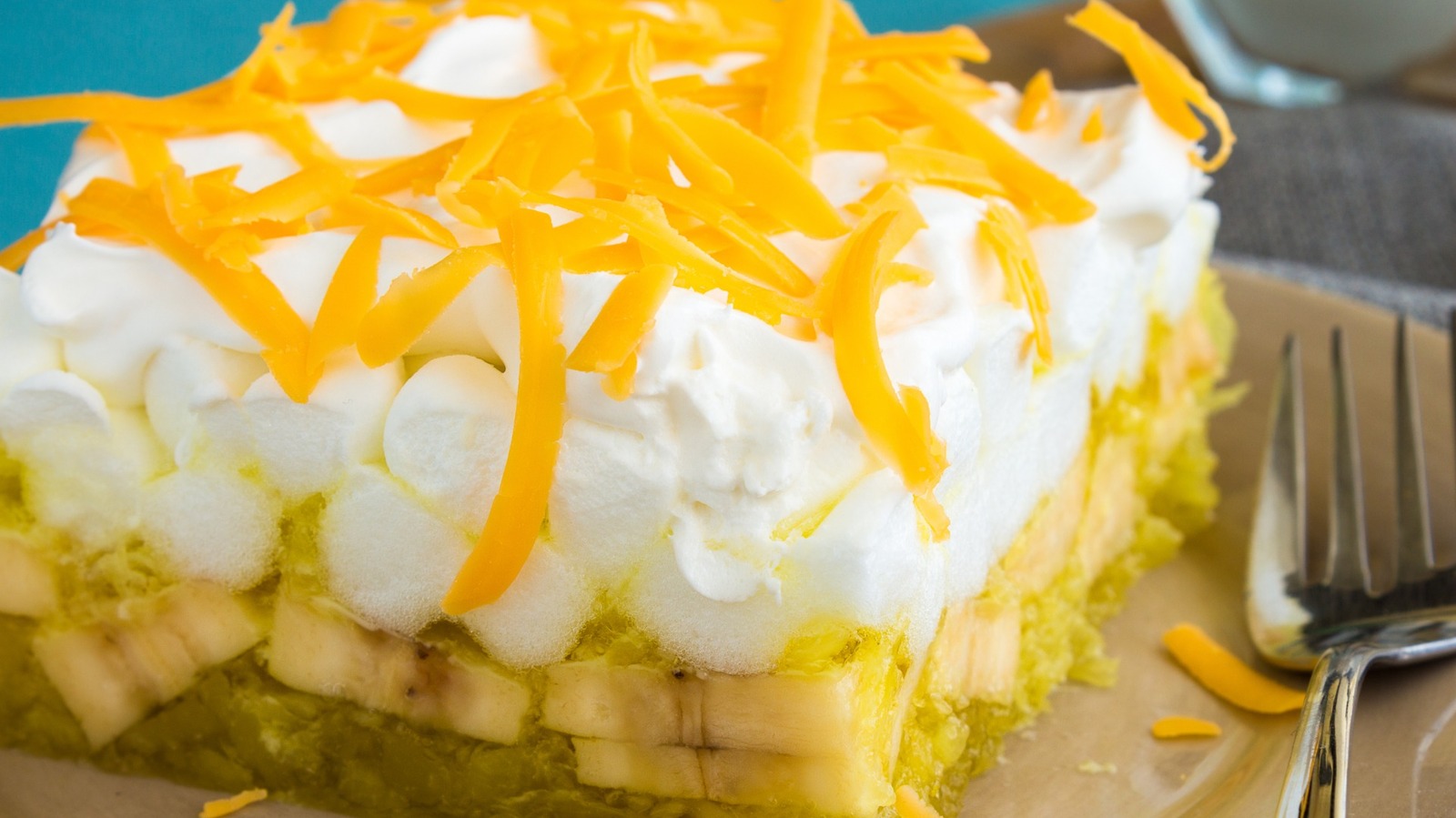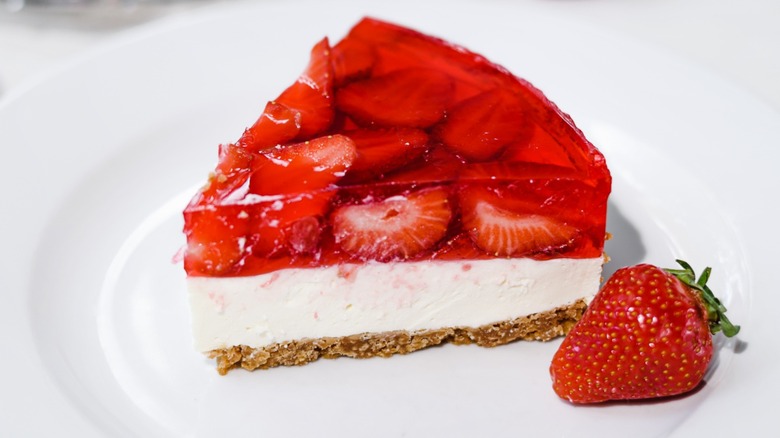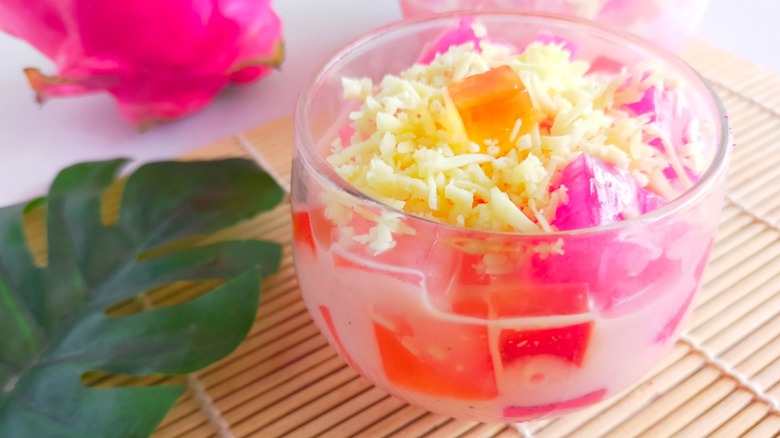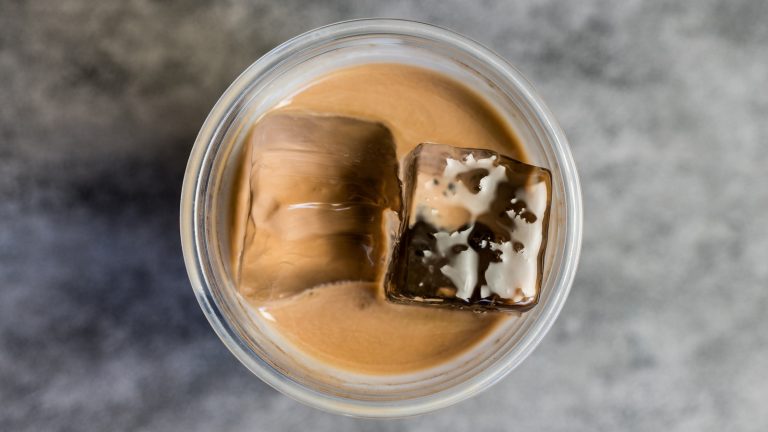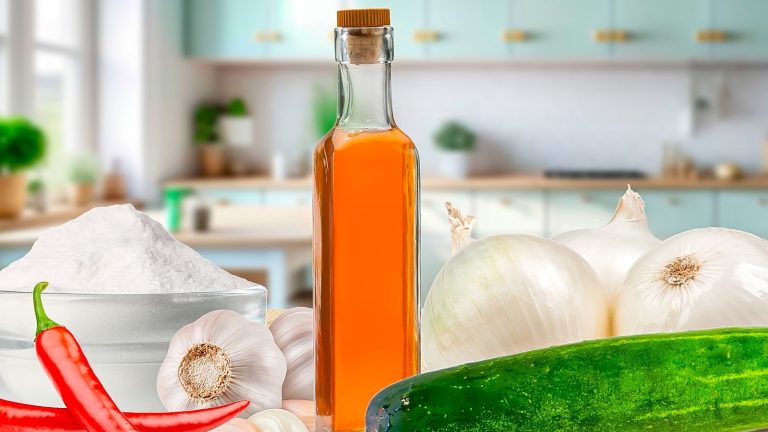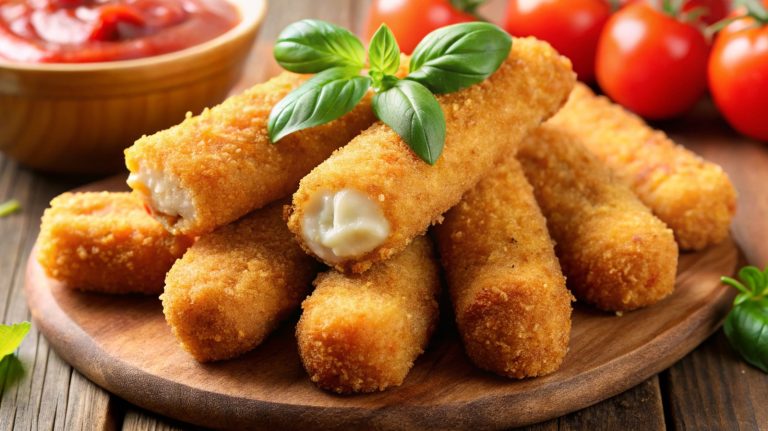Cookbooks from the 1950s to the ’70s come with their fair share of eccentric vintage appetizers, and a lot tend to feature some combination of Jell-O and cheese. One such dish involved pouring Jell-O into a mold and mixing in sliced fruit and balls of cheese. As odd as it may seem, the combo has actually been part of culinary history for hundreds of years.
It’s a tradition that traces back to the Medieval Ages, where the labor-intensive process of making gelatin meant jellied foods were available only to those who could afford to employ sizable kitchen staffs. Back then, savory gelatin dishes were much more common, so it wasn’t unusual to see cheese and meat suspended in jelly. With the invention of Jell-O in the late 1800s, gelatin became a lot more accessible, leading to greater experimentation by home cooks.
By the 1950s, Jell-O was ubiquitous in American kitchens, and creations like the aforementioned Jell-O with cheese balls started popping up. In her 1992 essay “‘The Jell-O Syndrome’: Investigating Popular Culture/Foodways”, author Sarah E. Newton noted that molded Jell-O dishes were seen as the height of refinement at the time, and became an everyday part of people’s lives through housewives who wanted the best for their families. While Jell-O is no longer the status symbol it used to be, the cheese-and-gelatin combo remains a favorite in a lot of households today.
Gelatin and cheese is an enduring combination
The pairing of gelatin and cheese isn’t just a relic of the mid-20th century. Some modern cheesecakes get a little extra jiggle with the help of some Jell-O. Danish pastries occasionally have gelatin in their fruit toppings, sitting above a rich, creamy cheese filling. Some folks make jello shots with a cheese layer when entertaining at home. You can even find the pairing in other countries today; in the Philippines, for example, ube-flavored gelatin desserts are often topped with shredded cheddar.
While it may not be as popular as it was during its heyday, the combination is slowly making a comeback. Around 2019, Instagram users started posting recreations of vintage dishes, which often involved jellied foods from the 1960s and ’70s. Although this was originally done for laughs, genuine interest in these recipes grew over time, and there are still many users on the platform and other social media sites, such as TikTok, experimenting with cheesy gelatin dishes like orange cottage cheese jello salad and stained glass jelly cheesecake.
Jell-O’s fruity flavors pair well with cheese
As curious as the combination may seem to some, putting Jell-O and cheese together makes a lot of sense in terms of flavor. Fruit and cheese is a classic pairing, so it stands to reason that fruit-flavored Jell-O goes nicely with certain cheeses. Strawberry or cherry Jell-O, for example, would go well with light, creamy cheeses like a soft cheddar or brie. In general, whatever cheese pairs well with a particular food should also complement the equivalent Jell-O flavor.
In terms of texture, it’s safest to go with softer cheeses because they clash the least with Jell-O’s juicy, almost ethereal bite. When working with harder cheeses, you may want to try grating them over the dish as a garnish or using them to flavor plain gelatin. You can also play with contrast, such as topping your Jell-O with keto-friendly cottage cheese crisps, but keep in mind that preferences vary widely when it comes to texture. Just as it was in the mid-1900s, it’s all about having fun with experimentation and seeing which specific combo works best for you.


